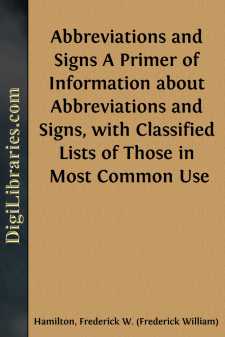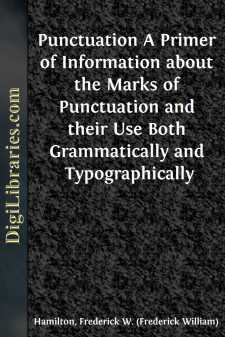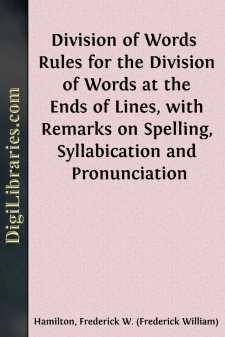Categories
- Antiques & Collectibles 13
- Architecture 36
- Art 48
- Bibles 22
- Biography & Autobiography 813
- Body, Mind & Spirit 142
- Business & Economics 28
- Children's Books 17
- Children's Fiction 14
- Computers 4
- Cooking 94
- Crafts & Hobbies 4
- Drama 346
- Education 46
- Family & Relationships 57
- Fiction 11829
- Games 19
- Gardening 17
- Health & Fitness 34
- History 1377
- House & Home 1
- Humor 147
- Juvenile Fiction 1873
- Juvenile Nonfiction 202
- Language Arts & Disciplines 88
- Law 16
- Literary Collections 686
- Literary Criticism 179
- Mathematics 13
- Medical 41
- Music 40
- Nature 179
- Non-Classifiable 1768
- Performing Arts 7
- Periodicals 1453
- Philosophy 64
- Photography 2
- Poetry 896
- Political Science 203
- Psychology 42
- Reference 154
- Religion 513
- Science 126
- Self-Help 84
- Social Science 81
- Sports & Recreation 34
- Study Aids 3
- Technology & Engineering 59
- Transportation 23
- Travel 463
- True Crime 29
Abbreviations and Signs A Primer of Information about Abbreviations and Signs, with Classified Lists of Those in Most Common Use
Description:
Excerpt
INTRODUCTION
The use of abbreviations is as old as the use of alphabets. In inscriptions and on coins and in other places where room is limited they have always been used in order to save space. The words GUILIELMUS QUARTUS DEI GRATIA REX BRITANNIARUM FIDEI DEFENSOR would hardly go around the circumference of a sixpence, three quarters of an inch in diameter. Therefore, we find them written GUILIELMUS IIII D: G: BRITANNIAR: REX F: D: In the manuscript period abbreviations were very extensively used. This was done partly to lighten the great labor of hand copying and partly to effect a double saving of expense, in labor and in costly material. Certain of these abbreviations were in common use and perfectly intelligible. Unfortunately the copyists did not limit their abbreviations to these, but devised others for their own use much to the discomfort of their readers, especially after the lapse of centuries.
The introduction of printing removed the pressing necessity for the extensive use of abbreviations, but the actual use continued much longer than one would think. The early printed books were reproductions of manuscripts. In some cases the earliest were almost forgeries, and were probably intended to be sold as manuscripts. The types were cut in imitation of the handwriting of some well-known scribe and all his mannerisms and peculiarities were faithfully copied. An incidental result was the expansion of fonts of type by the inclusion of a great number of ligatures and of characters indicating the omission or combination of letters. Habit dies hard, and even after the type founders had freed themselves from the tyranny of manuscript printers continued to follow the habits of the copyist. The saving of material and labor still continued to be considered. The methods of abbreviation in use in written matter continued to be followed in print even down to the first quarter of the last century.
The result of all this abbreviation was serious and well-founded complaint about the difficulty of reading books thus printed. De Vinne gives the following astonishing example, said to be taken practically at random from a Latin copy of the Logic of Ockham printed at Paris in 1488.
"Sic his e fal sm qd ad simplr a e pducibile a Deo g a e silr hic a n e g a n e pducibile a Deo."
These are the abbreviations for Sicut his est fallacia secundum quid ad simpliciter. A est producibile a Deo. Ergo A est. Et similiter hic. A non est. Ergo A non est producibile a Deo.
The best present usage is to use abbreviations very sparingly. Certain recognized abbreviations are used under certain conditions, but generally only under constraint of limited space.
RULES FOR THE USE OF ABBREVIATIONS
I. GENERAL RULES.
Use no contractions or abbreviations in any place where there is room to print the words in full.
All legitimate words should be spelled out in full in text matter, but abbreviations are often needed in book work for footnotes and tables and in commercial work, where many brief forms and signs are used which are commonly understood and are as intelligible as words....






